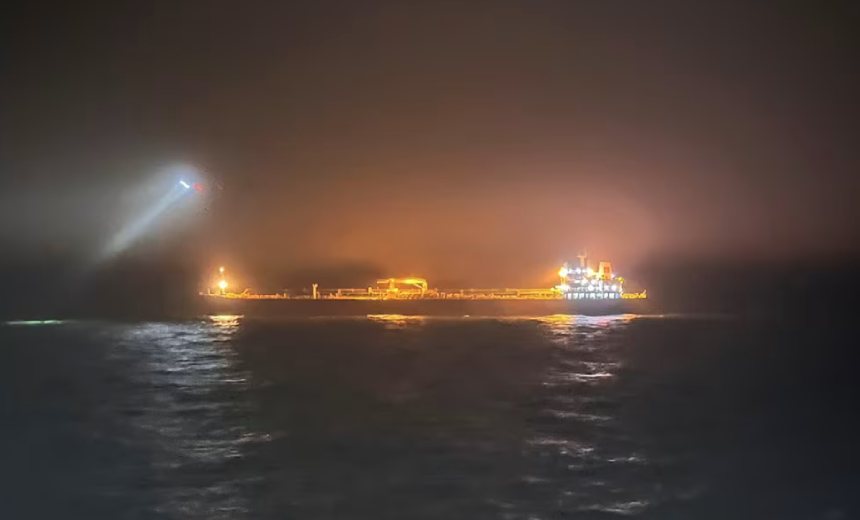Critical Infrastructure Security
,
Cyberwarfare / Nation-State Attacks
,
Fraud Management & Cybercrime
EU Identifies ‘Eagle S’ as Part of Russian Shadow Fleet Linked to Sanctions Evasion

On December 25, a significant incident occurred when Finnish authorities boarded an oil tanker, the Eagle S, believed to have caused damage to crucial telecommunications and electrical cables beneath the Baltic Sea. This action follows an investigation initiated after the tanker reportedly ruptured the Estlink 2 power transmission cable, which is essential for linking Finland’s electricity supply with that of Estonia.
The Finnish police confirmed that they escorted the Eagle S into their territorial waters as part of an ongoing criminal investigation. They discovered that the vessel was operating without an anchor, raising concerns about maritime safety protocols. Notably, the rupture of the cable has not yet resulted in a disruption of electricity supply as reported by Fingrid Oyj, the national operator managing Finland’s electricity transmission. However, Estonian Prime Minister Kristen Michal assured that grid operators are prepared to deploy contingency measures if necessary.
The Eagle S is registered in the Cook Islands and is reportedly managed by Caravella LLC-FZ, based in the UAE. This vessel may have also caused damage to four telecommunications cables, adding to the concerns surrounding potential sabotage in the Baltic region, particularly given the backdrop of recent incidents attributed to Russian state activities.
The Finnish communications authority identified the affected cables as vital links between Helsinki, Estonia, and Germany, suggesting that any damage to these lines could hinder communications, although no major impacts have been detected as yet. The cumulative effect of repeated infrastructure damage in the Baltic raises alarms about systemic threats, prompting Estonia and its NATO allies to consider appropriate countermeasures.
The European Commission has drawn attention to the Eagle S, describing it as part of a Russian “shadow fleet,” characterized by older, uninsured ships with unclear ownership that are suspected of transporting embargoed cargo. This fleet is seen as a direct threat to regional security and potentially finances Russia’s military engagements. Additionally, Finnish Customs officials noted that the Eagle S was carrying 35,000 tons of unleaded gasoline reportedly loaded in Russian ports at the time of the incident.
The ship’s tracking data indicated a marked slowdown during the time of the cable rupture, which adds to suspicions around its operational conduct. In response to the incident, Elering, the Estonian national transmission system operator, reaffirmed that the disruption of the Estlink 2 power cable will not impede planned synchronization with the European grid, anticipated for next year, which aims to decouple the Baltic states from the Russian electricity network.
In light of these events, this incident underscores the complexities of maritime security in the region, emphasizing the intersection of cybersecurity, infrastructure health, and international geopolitics. As businesses and infrastructure operators increasingly rely on digital systems, such vulnerabilities must be a primary focus when considering potential threats to operational integrity. This situation aligns with the MITRE ATT&CK framework, where adversarial tactics such as initial access through vessel operations and subsequent impact on infrastructural integrity through physical means are apparent.
